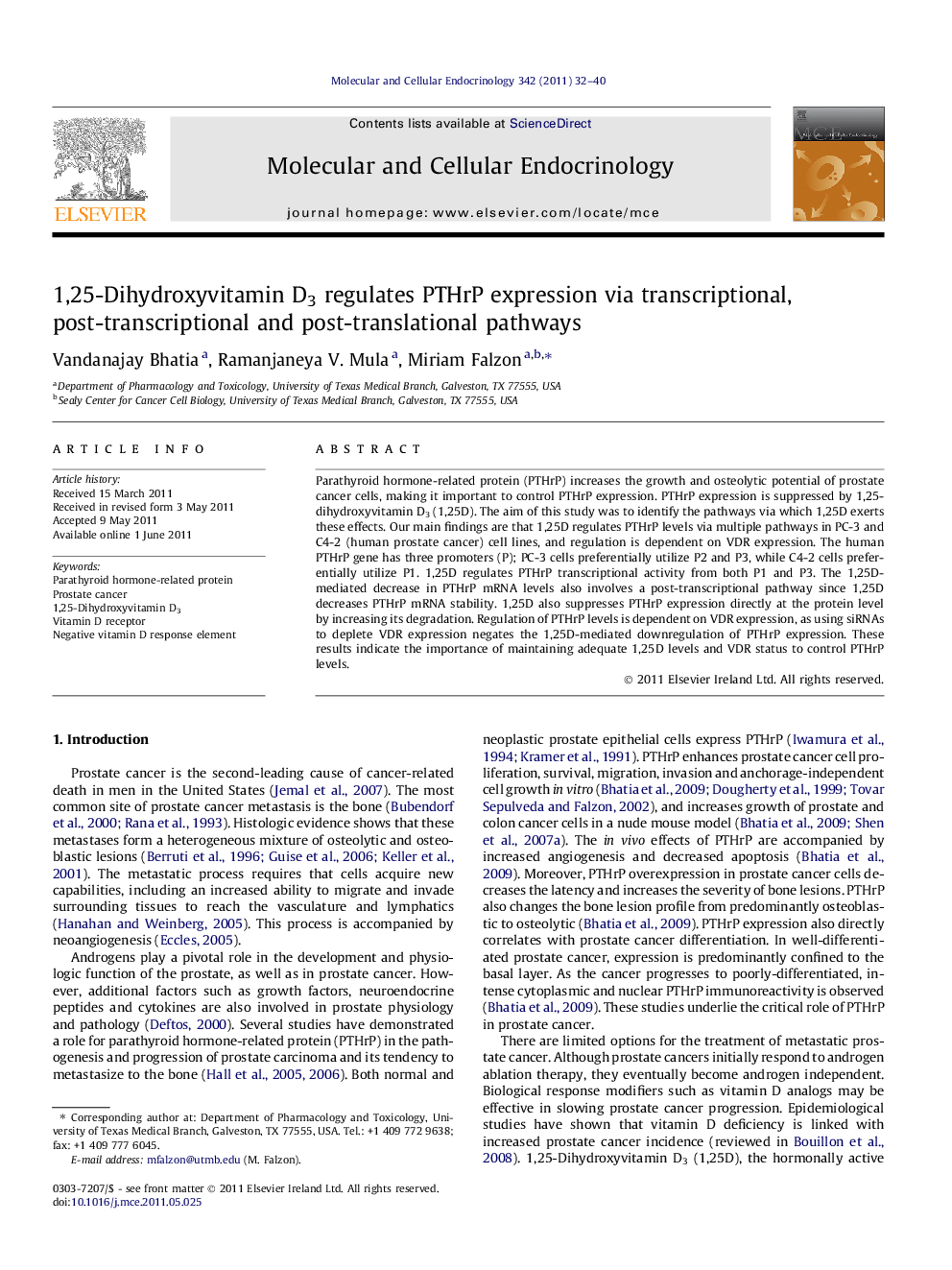| Article ID | Journal | Published Year | Pages | File Type |
|---|---|---|---|---|
| 2196568 | Molecular and Cellular Endocrinology | 2011 | 9 Pages |
Parathyroid hormone-related protein (PTHrP) increases the growth and osteolytic potential of prostate cancer cells, making it important to control PTHrP expression. PTHrP expression is suppressed by 1,25-dihydroxyvitamin D3 (1,25D). The aim of this study was to identify the pathways via which 1,25D exerts these effects. Our main findings are that 1,25D regulates PTHrP levels via multiple pathways in PC-3 and C4-2 (human prostate cancer) cell lines, and regulation is dependent on VDR expression. The human PTHrP gene has three promoters (P); PC-3 cells preferentially utilize P2 and P3, while C4-2 cells preferentially utilize P1. 1,25D regulates PTHrP transcriptional activity from both P1 and P3. The 1,25D-mediated decrease in PTHrP mRNA levels also involves a post-transcriptional pathway since 1,25D decreases PTHrP mRNA stability. 1,25D also suppresses PTHrP expression directly at the protein level by increasing its degradation. Regulation of PTHrP levels is dependent on VDR expression, as using siRNAs to deplete VDR expression negates the 1,25D-mediated downregulation of PTHrP expression. These results indicate the importance of maintaining adequate 1,25D levels and VDR status to control PTHrP levels.
► 1,25D downregulates PTHrP mRNA and protein levels. ► 1,25D regulates PTHrP mRNA levels via a transcriptional pathway. ► 1,25D also alters the mRNA half-life of PTHrP. ► 1,25D also regulates PTHrP via a post-translational pathway.
